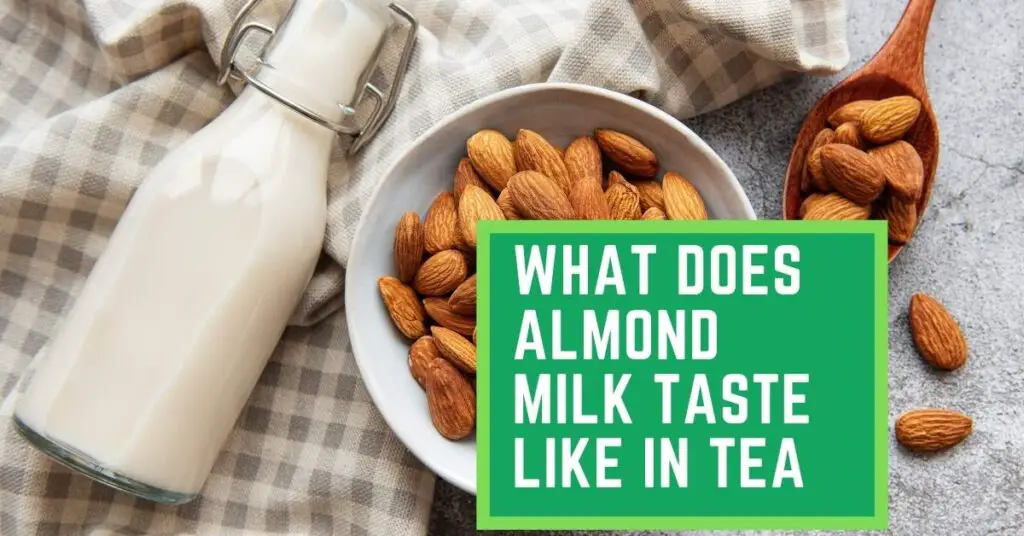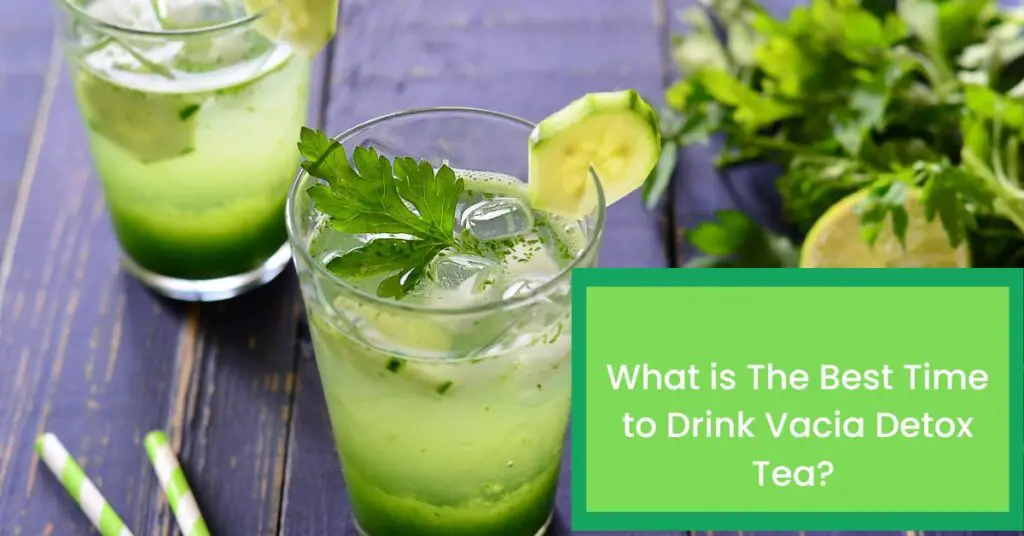Embark on a sensory odyssey as we explore the kaleidoscopic world of tea, where flavor, aroma, and texture converge with wellness and innovation. In this immersive journey, we navigate the delicate elegance of white tea, the fresh and grassy landscapes of green, the bold robustness of black, and the balanced harmony of oolong.
Unveil the health benefits woven into each brew and discover the captivating realm of artisanal blends, herbal infusions, and innovative tea combinations. From ancient traditions to the avant-garde, join us in savoring the nuanced symphony that tea, in its myriad forms, graciously unfolds for discerning enthusiasts and curious minds alike.
Also read: The world’s most expensive teas and what makes them special.

Brewing the Tale:relude to Tea’s Symphony
Ah, fellow tea aficionados, welcome to a journey that transcends the ordinary and delves deep into the exquisite universe of teas. In this introductory chapter, we set the stage by offering you a panoramic view of the diverse tea types that grace our cups and the pivotal role played by flavor, aroma, and texture in elevating the tea experience.
Brief Overview of Tea Types: A Palette of Possibilities
Let’s begin our odyssey with a sweeping glance at the tea landscape. Tea, a beverage that originated as a medicinal elixir in ancient China, has evolved into a global sensation, captivating hearts and taste buds across continents. Our protagonists in this flavorful saga are the four main types: white, green, black, and oolong.
- White Tea
Think of it as the whispering breeze of the tea world. Delicate, subtle, and often adorned with silver tips, white tea undergoes minimal processing, allowing the natural essence of the tea plant to shine through.
- Green Tea
The vibrant sibling is celebrated for its grassy notes and bright liquor. Green tea’s leaves are steamed or pan-fired, preserving its fresh, herbal character that ranges from mellow to robust.
- Black Tea
The bold and robust character of black tea emerges through a process called oxidation. With flavors that can be malty, fruity, or even smoky, black tea is a comforting companion for many tea enthusiasts.
- Oolong Tea
Occupying the middle ground between green and black teas, oolong undergoes partial oxidation, resulting in a spectrum of flavors from floral and creamy to toasty and rich.
Importance of Flavor, Aroma, and Texture in Tea: The Symphony of Sensations
Now, why do we embark on this voyage of tea exploration? It’s not just about a beverage; it’s an experience that engages the senses in a symphony of flavors, aromas, and textures.
- Flavor
The very soul of tea lies in its flavor. Whether it’s the delicate notes of a white tea or the bold richness of a black tea, the interplay of tastes on your palate is where the magic unfolds.
- Aroma
Close your eyes and inhale deeply – the aroma of tea is like a fragrant embrace. From the sweet florals of white tea to the robust earthiness of black, each tea type carries its own olfactory poetry.
- Texture
As your taste buds dance with the flavors, the texture of the tea adds a tactile dimension to the experience. Is it smooth and velvety, or does it leave a crisp, refreshing finish? Texture is the unsung hero that completes the symphony.
So, dear tea enthusiasts, buckle up for an expedition into the nuances of white, green, black, and oolong teas. The tea kettle is simmering, and the journey promises to be as rich and varied as the leaves themselves. Let the steeping begin!
Understanding Tea Varieties
Welcome, fellow tea connoisseurs, to the heart of our exploration – the intricacies of tea varieties. In this section, we’ll unveil the secrets of white, green, black, and oolong teas, each a masterpiece in its own right.
White Tea: Delicate Elegance
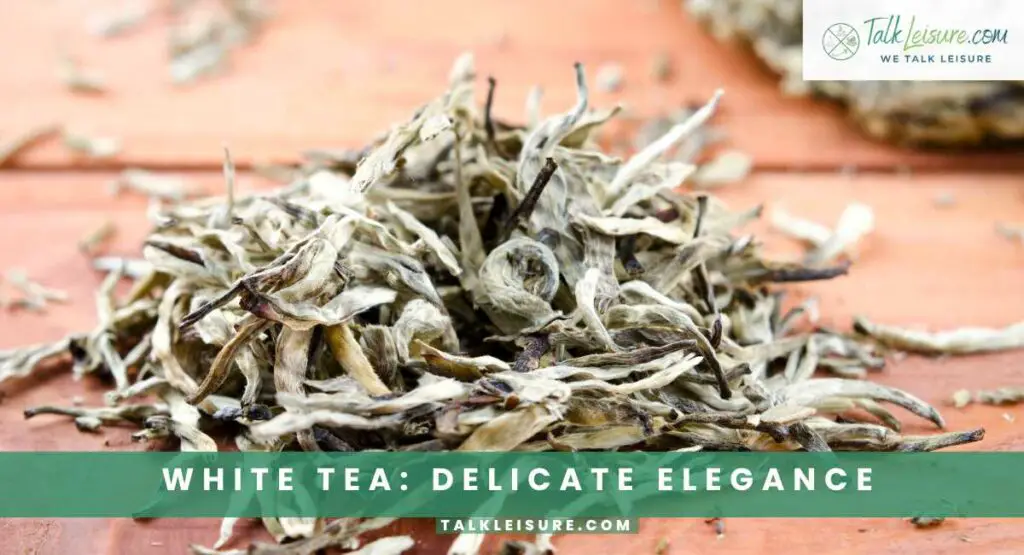
Origins and Processing: The Dance of Simplicity
Our journey begins with the epitome of delicacy – white tea. Nestled in the misty mountains of Fujian, China, where the air is pure and the soil fertile, white tea takes its first breath. Selected with meticulous care, only the unopened buds and youngest leaves find their way into this gentle elixir. In a dance of simplicity, these leaves are air-dried, preserving their innate elegance.
Notable White Tea Varieties: Silver Needles and Beyond
Among the stars of the white tea constellation, Silver Needle takes center stage. Its silver-haired buds unfurl into a cup of ethereal purity. Bai Mu Dan, with its mix of buds and leaves, adds complexity to the narrative. Together, they form a symphony of delicate flavors waiting to be discovered.
Flavor Profile: A Subtle Ballet on the Palate
The flavor of white tea is like a soft whisper—subtle yet profound. Imagine sipping sunlight filtered through petals. It’s a delicate dance on the palate, with notes ranging from floral and sweet to a hint of melon. White tea invites you to slow down and savor the simplicity in every sip.
Aromas Found in White Tea: Perfume of Tranquility
Bring the cup to your lips, close your eyes, and inhale. The aromas of white tea transport you to a garden in full bloom. Floral notes, hints of honey, and the freshness of the outdoors create a perfume of tranquility that lingers, inviting you into a moment of serenity.
Texture Exploration: Velvety Whispers on the Tongue
But what about texture? White tea, with its liquid silk texture, is a gentle caress on the tongue. It’s not just a beverage; it’s an experience that leaves a velvety impression, enticing you to explore further.
Green Tea: Fresh and Grassy
Diverse Green Tea Varieties: A Spectrum of Green
Our journey now takes a vibrant turn into the world of green tea, where leaves dance with the essence of freshness. From the steaming fields of Japan to the ancient tea gardens of China, green tea comes in many hues, each telling a unique tale.
Processing Techniques: Preserving the Essence
The magic of green tea lies in its processing. Through steaming or pan-firing, the leaves retain their green vibrancy. Sencha, Matcha, and Dragon Well – each variety unfolds a different chapter of the green tea story.
Flavor Characteristics: Grassiness with Grace
The taste? Imagine a meadow after a spring rain – fresh, green, and revitalizing. Green tea’s flavor ranges from vegetal to nutty, with a grassy undertone that lingers, leaving a refreshing imprint on your taste buds.
Aromatic Nuances: A Symphony of Scents
Inhale deeply, and you’ll catch the aromatic nuances of green tea. From the seaweed notes of Japanese Sencha to the chestnut aroma of Long Jing, the scents are as diverse as the landscapes that birthed them.
Texture Highlights: Crisp and Clean
And the texture? Green tea is like a crisp breeze, leaving a clean finish. Its briskness awakens the senses, making it a perfect companion for those seeking a lively tea experience.
Black Tea: Bold and Robust
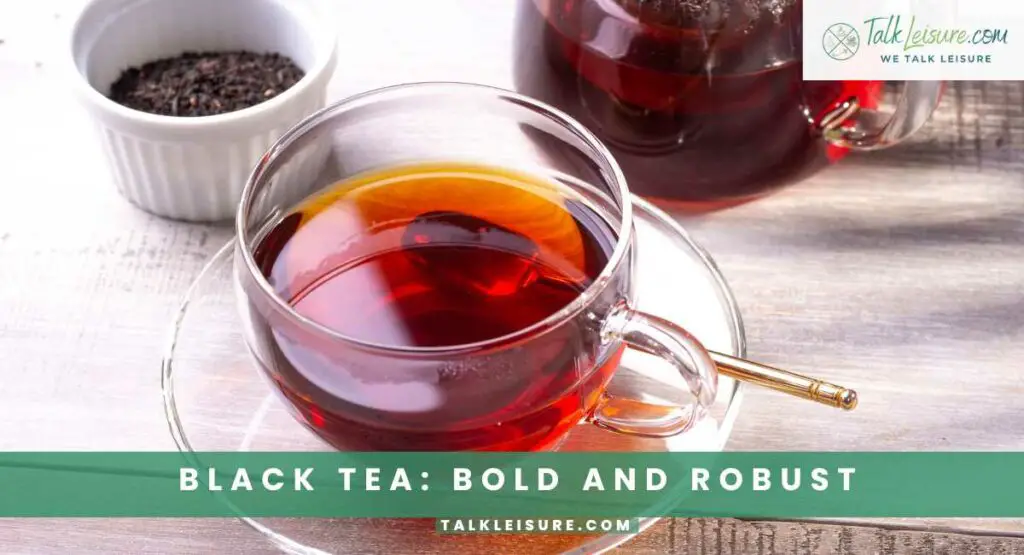
Processing Methods for Black Tea: The Alchemy of Oxidation
Now, let’s venture into the bold realm of black tea, where oxidation weaves its magic. Whether it’s the hills of Assam, the gardens of Darjeeling, or the ancient lands of Yunnan, black tea embodies strength.
Notable Black Tea Varieties: From Darjeeling Elegance to Assam Boldness
Darjeeling First Flush, with its floral notes, stands in contrast to the robustness of Assam Breakfast. Lapsang Souchong, smoked over pine fires, adds a touch of mystery. The world of black tea is as diverse as the cultures that embrace it.
Flavor Complexity: A Symphony of Tastes
The flavors of black tea are a symphony—bold, robust, and complex. From malty Assams to fruity Ceylons, the taste journey is a thrilling ride for the palate.
Aromas in Black Tea: Earthy and Enchanting
Inhale the aroma, and you’ll encounter the earthy richness of black tea. Whether it’s the sweet muscatel notes of Darjeeling or the brisk scent of a strong English breakfast, black tea’s aromas are enchanting.
Texture Examination: A Hearty Embrace
And the texture? Black tea offers a hearty embrace. It’s a comforting warmth that fills you from the inside out, making it the perfect companion for crisp mornings or reflective evenings.
Oolong Tea: Balanced Harmony
Semi-oxidized Magic: The Artistry of Oolong
As we traverse the spectrum, we arrive at the mystique of oolong tea, where oxidation is a dance of balance. From the cliffs of Taiwan to the Fujian hills, oolong is a testament to the artistry of tea-making.
Range of Oolong Varieties: From Tie Guan Yin to Da Hong Pao
Tie Guan Yin, with its floral allure, contrasts with the boldness of Da Hong Pao. The variety in oolong is a journey through taste, from the lightly oxidized to the deeply fermented.
Flavor Spectrum: A Journey in Complexity
Oolong’s flavor spectrum is a journey in complexity. It can be floral, creamy, toasty, or fruity, depending on the level of oxidation. Each sip unfolds layers, inviting you to explore the nuanced landscape.
Aromas Unveiled: Fragrance of Elegance
Inhale, and you’ll be enveloped in the fragrance of oolong. Floral, with a hint of fruitiness, the aromas complement the taste, creating an elegant olfactory experience.
Texture Dynamics: From Silky to Robust
And the texture? Oolong’s texture dynamics are captivating. From silky smoothness to a more robust finish, it’s a tactile journey that adds depth to the overall experience.
As we conclude our tour through the intricate realms of white, green, black, and oolong teas, remember that each variety is a chapter in the grand novel of tea. The journey continues, so stay steeped, fellow enthusiasts, for more revelations, await us in the next chapters of our tea odyssey.
Factors Influencing Tea Characteristics
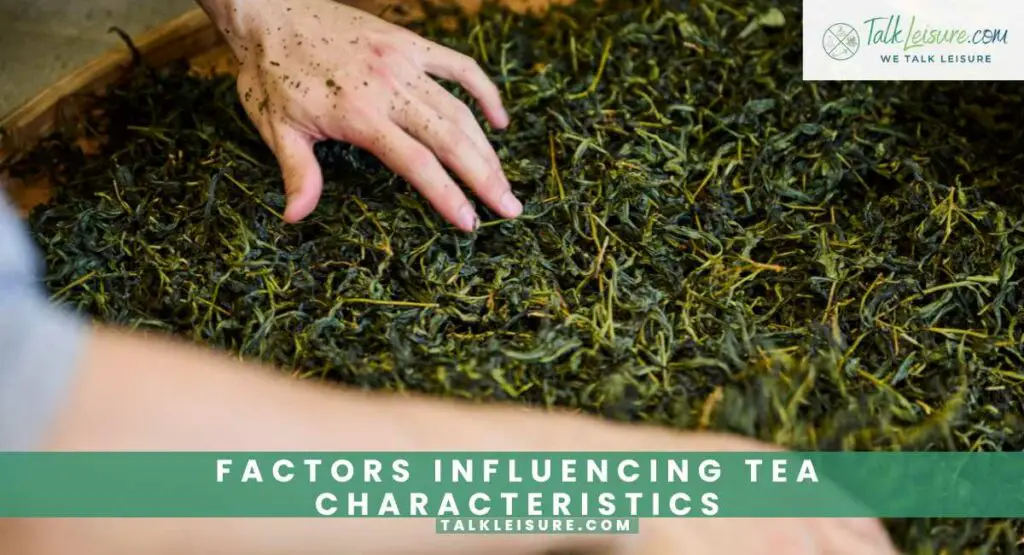
Welcome back, tea enthusiasts, as we embark on a journey to unravel the intricate factors that shape the character of our beloved brews. In this section, we’ll explore the elements that make each cup of tea a unique and nuanced experience.
Terroir and Tea: Where Earth Meets Elegance
The Symphony of Soil and Climate
Ever wondered why a Darjeeling tastes different from a Taiwanese oolong? It’s the terroir—the unique combination of soil, climate, and altitude—that lends each tea its distinctive flavor profile. The misty hills of Darjeeling infuse a muscatel note, while the rocky terrains of Wuyi Mountain contribute to the mineral richness of Da Hong Pao. Terroir is the silent maestro conducting the symphony of tea flavors.
Processing Techniques: Crafting Elegance, One Leaf at a Time
From Withering to Firing: The Alchemy of Transformation
Tea leaves undergo a fascinating metamorphosis, and it’s the processing techniques that sculpt their final form. Whether it’s the delicate touch of white tea processing or the boldness induced by black tea oxidation, the artistry lies in the hands of skilled artisans. Withering, rolling, oxidizing, firing – each step is a brushstroke in the masterpiece of tea craftsmanship.
Harvesting and Seasonal Variations: Nature’s Ever-Changing Palette
Timing is Everything
The moment a tea leaf is plucked can redefine its essence. The first flush, plucked in spring, boasts a delicate and fresh character, while the robustness of a second flush, harvested in summer, tells a different story. Seasonal variations, influenced by factors like rainfall and temperature, add a dynamic layer to the tea narrative. It’s a yearly cycle that shapes the very fabric of tea.
Tea Leaf Grades: The Hierarchy of Leaves
From Buds to Broken Leaves
Not all tea leaves are created equal, and their grade determines much of the brewing experience. Silver needles with their unopened buds signify the epitome of elegance, while broken leaves may infuse a bolder cup. Grades like Tippy Golden Flowery Orange Pekoe (TGFOP) or Souchong hint at the quality and appearance of the leaves, guiding the discerning tea drinker toward their preferred cup.
As we uncover the layers of terroir, processing techniques, harvesting nuances, and leaf grades, remember that tea is a tapestry woven with the threads of nature and human artistry. Each cup is a sip of history, geography, and craftsmanship. So, as you lift your teacup, ponder the journey it has taken, from leaf to liquor, and savor the culmination of factors that make your tea experience truly exceptional. Stay steeped, for there’s always more to discover in the world of tea.
Brewing Techniques for Optimal Experience

Greetings, tea enthusiasts, as we step into the artful realm of brewing – where the alchemy of water, time, and leaves converges to create the perfect cup. Join us as we unlock the secrets that transform tea leaves into a sensory masterpiece.
Water Temperature and Its Impact: The Dance of Degrees
Matching Heat to Leaves
Imagine a delicate dance where water temperature is the partner to the tea leaves’ performance. Each type of tea has its ideal temperature range, a nuanced choreography that coaxes out the best flavors without scalding or underwhelming. White tea, a gentle partner, prefers cooler temperatures, while the bold black tea embraces the heat. It’s a dance of degrees that determines the symphony in your cup.
Brewing Time Guidelines: Patience in a Cup
Timing the Elixir
Brewing time is the conductor’s baton, directing the tempo of flavor extraction. Whether you’re steeping a delicate white tea or a robust oolong, each requires its own time to unfold its full potential. Too short, and the melody might be incomplete; too long, and bitterness may join the harmony. Patience, dear tea drinker, is the key to orchestrating the perfect cup.
Tea-to-Water Ratio: Striking the Right Balance
Proportion as Perfection
In the art of tea brewing, balance is everything. The ratio of tea leaves to water determines the strength and depth of your infusion. Too much tea may overpower, while too little might leave you yearning for more. It’s a delicate equilibrium, and finding your preferred balance is the gateway to a truly personalized tea experience.
Infusion Methods for Different Teas: Tailoring the Technique
Tea Leaves’ Expression Through Vessels
The vessel you choose is a stage for the tea leaves to express themselves. Whether it’s the traditional gaiwan for delicate white teas, the classic teapot for bold blacks, or the gongfu cha set for oolongs, each method imparts its own nuances to the brew. Discovering the right vessel for your chosen tea is like finding the perfect frame for a masterpiece.
As we delve into the intricacies of water temperatures, brewing times, tea-to-water ratios, and infusion methods, remember that brewing tea is an art as much as it is a science. Embrace experimentation, adjust the variables according to your taste, and let the ritual of brewing become a meditative journey. May your teapot sing and your teacup dance with the symphony of flavors as you master the delicate balance of water and leaves. Cheers to a perfectly brewed cup!
Health Benefits of Different Teas

Indulging in a cup of tea transcends mere pleasure; it’s a voyage into a realm where taste meets wellness. In this section, we unravel the health benefits woven into the fabric of different teas.
Antioxidant Properties: The Elixir of Cellular Health
White Tea’s Gentle Shield
White tea, being the least processed, boasts a high concentration of antioxidants, particularly catechins. These compounds contribute to cellular health, helping combat oxidative stress and supporting overall well-being.
Green Tea’s Fortifying Force
Green tea, rich in polyphenols, offers a robust defense against free radicals. Epigallocatechin gallate (EGCG), a potent antioxidant in green tea, has been linked to various health benefits, including improved heart health and potential cancer-fighting properties.
Black Tea’s Protective Brew
Black tea, with its theaflavins and thearubigins, showcases antioxidant prowess. Studies suggest that these compounds may contribute to cardiovascular health and have anti-inflammatory effects, adding a protective layer to your daily cup.
Oolong Tea’s Balanced Antioxidant Symphony
Oolong tea, straddling the worlds of green and black, combines the antioxidant benefits of both. Its semi-oxidized nature gives rise to a unique blend of catechins, theaflavins, and thearubigins, contributing to a harmonious antioxidant symphony.
Caffeine Content: A Gentle Pick-Me-Up
White Tea’s Subtle Lift
Among the least caffeinated of all teas, white tea provides a gentle energy boost without the jitters. Ideal for those seeking a milder stimulant effect.
Green Tea’s Balanced Energizer
Green tea contains less caffeine than black tea but enough to provide a refreshing lift. Its caffeine content, combined with the presence of L-theanine, promotes alertness without the intensity often associated with other caffeinated beverages.
Black Tea’s Bold Awakening
For those in need of a robust start, black tea delivers a higher caffeine punch. A cup of black tea can offer a steadier energy release compared to coffee, accompanied by a rich tapestry of flavors.
Oolong Tea’s Moderate Buzz
Oolong tea strikes a caffeine balance between green and black. The moderate caffeine content provides an invigorating experience without the potential for overstimulation.
Other Health Considerations: A Holistic Approach
White Tea’s Skin Elixir
White tea’s antioxidants, combined with its potential anti-inflammatory properties, may contribute to healthier skin. Regular consumption is often associated with improved complexion and a reduction in signs of aging.
Green Tea’s Metabolic Boost
Research suggests that the catechins in green tea may enhance metabolism, making it a potential ally for those on a wellness journey. Green tea’s influence on weight management has sparked interest among health enthusiasts.
Black Tea’s Heart-Healthy Harmony
Several studies hint at black tea’s potential role in supporting cardiovascular health. Its antioxidants may contribute to improved cholesterol levels and blood vessel function, promoting heart well-being.
Oolong Tea’s Digestive Delight
Traditionally revered for aiding digestion, oolong tea may offer benefits for those with digestive concerns. Its compounds, coupled with its moderate caffeine content, create a soothing brew for after-meal enjoyment.
In the rich tapestry of teas, our exploration concludes, leaving behind the lingering essence of delicate leaves, nuanced flavors, and a trove of healthful benefits. From the tranquil gardens of white tea to the invigorating fields of black, and the artful fusion of blends, this journey has been a sensory symphony.
As we sip the final drops, may the wisdom of terroir, brewing techniques, and the boundless creativity of blends linger in your teacup. Let this conclusion be a prelude to countless steeping adventures, an invitation to continuously savor the artistry that resides in every cup—a testament to tea’s timeless allure.
Frequently Asked Questions
- What happens if you drink oolong tea every day?
Drinking oolong tea daily can bring potential health benefits. Rich in antioxidants, it may support heart health, aid in weight management, and contribute to mental alertness. Oolong tea’s moderate caffeine content provides a gentle energy boost. However, individual responses vary, and excessive consumption should be avoided. As with any dietary habit, moderation is key, and consulting a healthcare professional is advisable, especially for those with specific health concerns.
- What is the processing of green black and oolong teas?
Green Tea: After harvesting, leaves are quickly steamed or pan-fired to halt oxidation, preserving their vibrant green color and delicate flavors. This minimal processing retains the tea’s natural antioxidants, resulting in a light, fresh taste.
Black Tea: leaves undergo full oxidation after harvesting, a process that darkens them and intensifies flavor. They are rolled, fermented, and dried, producing a robust, rich brew with complex notes.
Oolong Tea: Oolong undergoes partial oxidation, falling between green and black teas. Leaves are withered, rolled, and partially fermented, yielding a diverse range of flavors.
- What is the aroma of oolong tea?
The aroma of oolong tea can vary widely depending on the specific variety and level of oxidation. Generally, oolong teas offer a complex bouquet of floral, fruity, and sometimes creamy or toasty notes. Lightly oxidized oolongs may have floral and green aromas, resembling fresh flowers or spring meadows.
In contrast, more heavily oxidized oolongs can exhibit richer, roasted scents, reminiscent of baked grains or ripe fruits. The diverse aromas make oolong tea a sensorial delight, offering a range of olfactory experiences for tea enthusiasts.

